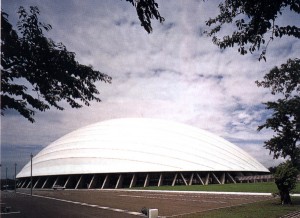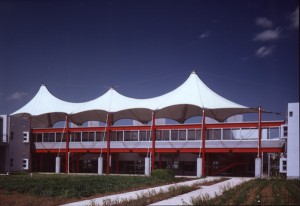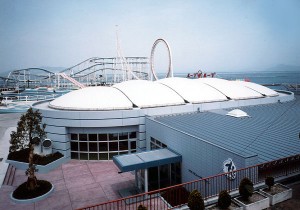There are largely three types of membrane structure buildings. Each type has the following characteristics.
Frame membrane structure
This type of membrane structure is composed by a steel frame or other types of frame structure covered with membrane to form roofs or exterior walls.
Since it is structurally stable and the openings can be formed flexibly, this type of membrane structure is highly economic and widely used for multiple applications, regardless of the sizes.
- Odate Jukai Dome
Suspension membrane structure
This type of membrane structure is formed mainly by the membrane material, and the basic form is the suspension structure.
It is abundant in rise and fall on the surface, so it has superior designability which takes advantage of the uniqueness of the curved surfaces. It contributes to build an aesthetic architectural structure that has a strong impact.
- Oguradai Elementary School
Air-supported membrane structure
This type of membrane structure uses the air pressure that is blown continuously into inside of the roofs and/or walls made of membrane materials to inflate the membrane until becoming stiff to support its self weight and all other surface loads.
It is highly economic and represents excellent workability in creating a wide open space inside a dome-shape structure that is supported by air pressure, without using columns and beams.
- Hiroshima Natalie Dolphin




